Inspired replication in buildings can be a heartfelt wink and nudge of admiration; there’s little wrong with it, provided it is done well and with sincerity. After all, that supreme modernist TS Eliot once confessed that: “Immature poets imitate; mature poets steal.”
Ireland has a number of interesting “architectural recreations”, some openly acknowledged, others subtle, some less so. Clery’s department store on O’Connell Street, for example, following significant damage during the Easter Rising, was modelled on the neo-classical design of Selfridges in London (Clery’s architect Robert Atkinson having spent much time in that city).
Comparisons can be found also in the art deco splendour of the older incarnation of Bewley’s Cafe on Grafton Street, built 1926, and Le Falstaff Cafe Bar (1903) in Brussels.
The Loos Bar, Trinity College
The most direct and unabashed replication of ideas derives from the Loos American Bar by Adolf Loos, Vienna, recreated in Trinity College as a private bar for university fellows.
Shane de Blacam and John Meagher set out to restore and redesign the dining hall at TCD following a fire in 1984. The initial idea for hospitality quarters was rather more prosaic, a drinks cabinet in the commons room, than what emerged.
A small room in the hall was eventually offered as space for a dedicated bar, and de Blacam told the Irish Architecture Foundation that he never mentioned the idea for a model of Loos’s work to the planning committee.
“One day we just decided to do it,” he said. “The Dublin model is a mirror image, left to right. It didn’t cost a lot of money and was made by a shop fitter, who was an extremely good craftsman, using plywood.”
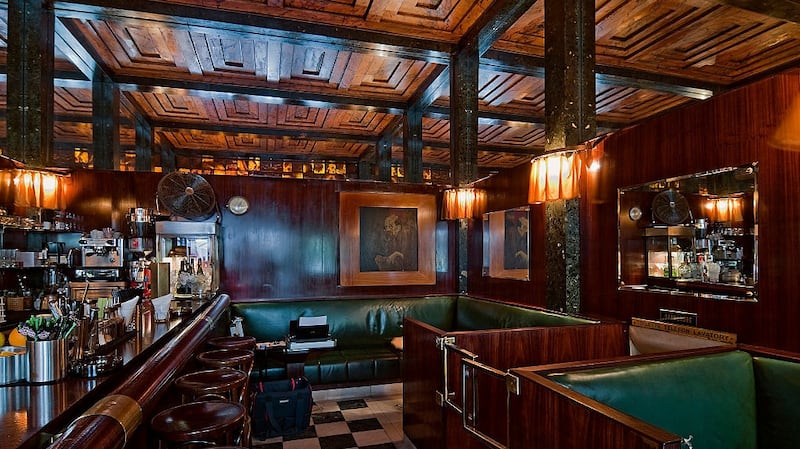
Loos’s bar (1908), once described as a construction of “tranquil discretion”, had also been inspired in its own right by the work of Louis Sullivan in Chicago. Mirrors create the idea of space in a small setting, reflecting a marble ceiling grid, while a tasteful combination of grain, leather, brass, and tile finishes a small, but sublime, design classic.
Ryan’s of Parkgate Street
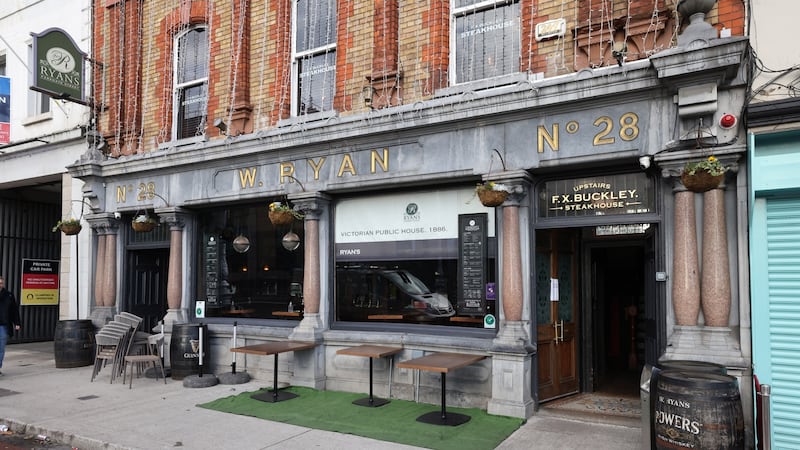
Staying a while longer in the pub, Ryan’s of Parkgate Street, Dublin, built about 1910, and The Long Hall (circa 1880) on South Great George’s Street, are part of a fine tradition of Victorian pubs that originated in London at the end of the 19th century.
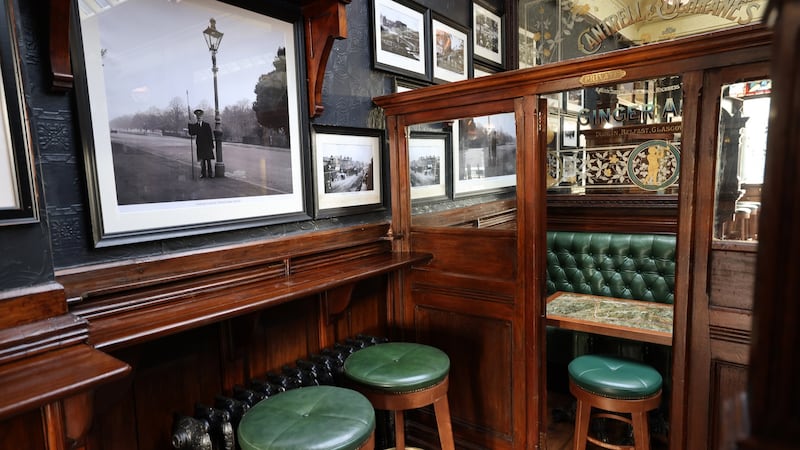
These “palaces for the poor masses” were built for comfort, and with unashamed glitter and ornamentation. The plain people, as Myles na gCopaleen would have called them, could sup in pubs of genuine architectural beauty in the little leisure time they possessed. Such beautiful bars can also be found in Liverpool (The Vines, The Philharmonic) and Birmingham (The Barton Arms).
But it is in London where a treasure trove of Victorian-style pubs are sprinkled. Some of the best are The Red Lion, Duke of York Street, St James’s, of which the great architecture writer Ian Nairn wrote in Nairn’s London: “All around the walls are magnificent cut-glass mirrors, the best in London . . . and as the bar is roughly square, wall after wall after wall is reflected in the real walls. Nothing is fuzzy, but everything has incredible depth and compassion combined with brilliance.”
The Princess Louise in Holborn
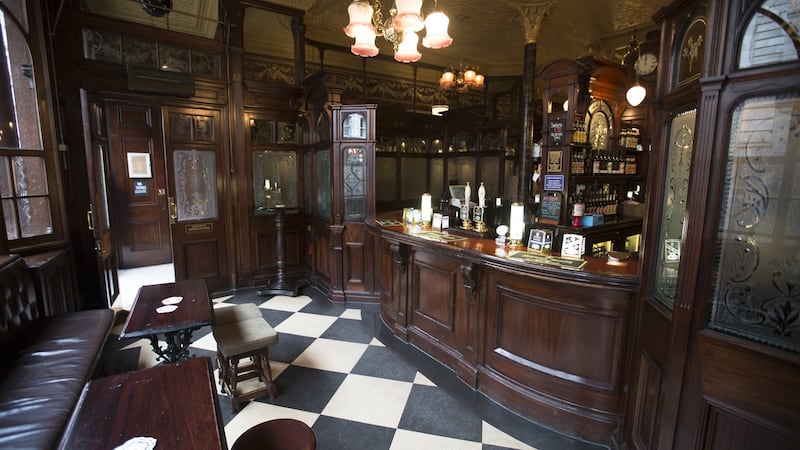
Another of London’s finest is The Princess Louise in Holborn, a hostelry with which Ryan’s bears comparison. Heritage writer Mark Girouard singles the Princess out for its little-altered 19th-century setting as you go through the doors: “A splendid interior survives . . . lining the walls of the bars with a mixture of plain and ornamental tiles, culminating in sumptuously coloured panels of swags and baskets of fruit or flowers that alternate with equally sumptuous mirrors.”
Girouard has written an excellent monograph on Victorian pubs, published by Yale, to wet the lips further. He includes other Irish pubs such as The Stag’s Head, Lynch’s/The Swan, and the sadly lost Irish House, all in Dublin; and the one he considers the finest on the island – The Crown in Belfast.
Le Corbusier, Creeslough
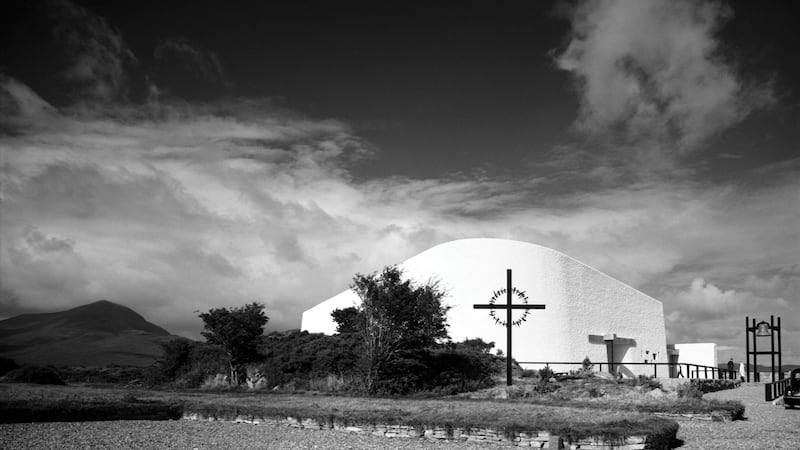
Liam McCormick is rightfully known as the doyen of Ulster churches with his modernist interpretation of sacred spaces (seven can be toured easily in a day, in Donegal). The Derry man never failed to acknowledge his debt to the work of his idol, Le Corbusier, and Notre Dame du Haut in Ronchamp, France in particular – especially on St Michael’s Church, Creeslough, Donegal.
St Michael’s was consecrated in 1971 and here we find many of the remarkable qualities of Corbusier’s work, in the Donegal church’s white-washed walls, curves, and irregular windows. McCormick adds his own masterful touch as well: clerestory windows on the roof mean that Muckish mountain is always in sight, creating a spectacular setting.
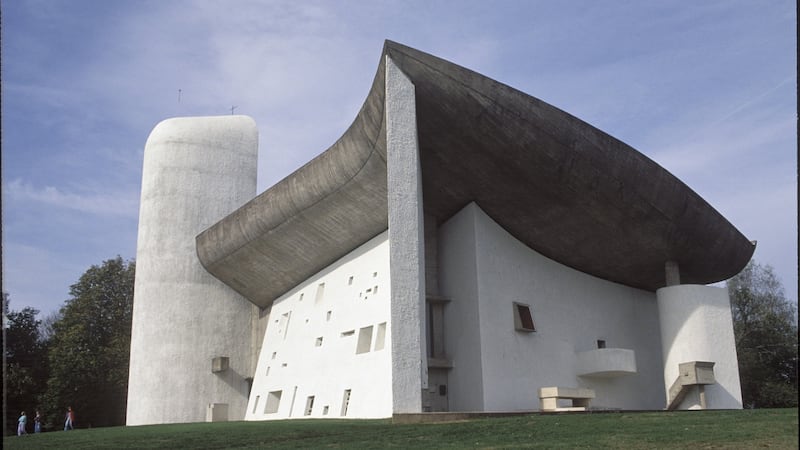
At Ronchamp, in Haute-Saône, Corbusier surprised many with his spiritual design in 1955 to replace a war-torn pilgrimage chapel. He even added an outdoor pulpit that can be used when the weather is suitable – how apt, from someone who loved to sermonise.
One’s Own Hearth in Chancery Place
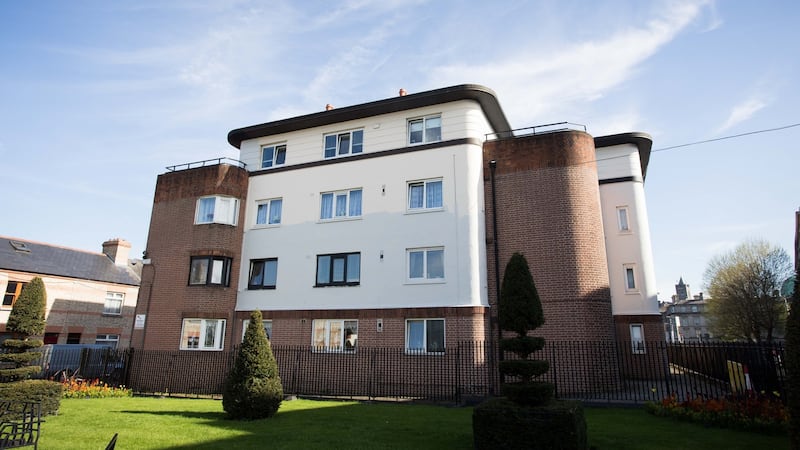
Amsterdam suffered from severe overcrowding at the beginning of the 20th century, which sparked Michel de Klerk’s socialist ambitions of building large quality housing estates.
De Klerk was a leader of the Amsterdam School of Architecture, and his co-operative Eigen Haard (Own Hearth) housing project in Amsterdam (1917-1920) – also known as The Ship due to its distinctive brick spire – undoubtedly influenced the ideas behind Dublin 7’s Chancery Place, and its architect, the socially principled Herbert Simms.
Dublin Corporation and Simms finished Chancery House in 1935, with 27 flats arranged in an L-plan block. Ellen Rowley’s More than Concrete Blocks says: “The scheme is considered the neatest and most successful of these 1930s blocks (one of several designed by Simms and his team). Clear form and massing of the overall blocks (and) their placement beside a small public garden with canted arched entrance and kiosk distinguish (it).”
You can also find the spirit of de Klerk in the Marrowbone Lane buildings in Dublin 8, also by Simms and the Dublin Corporation.
Cork’s Kahn-do building
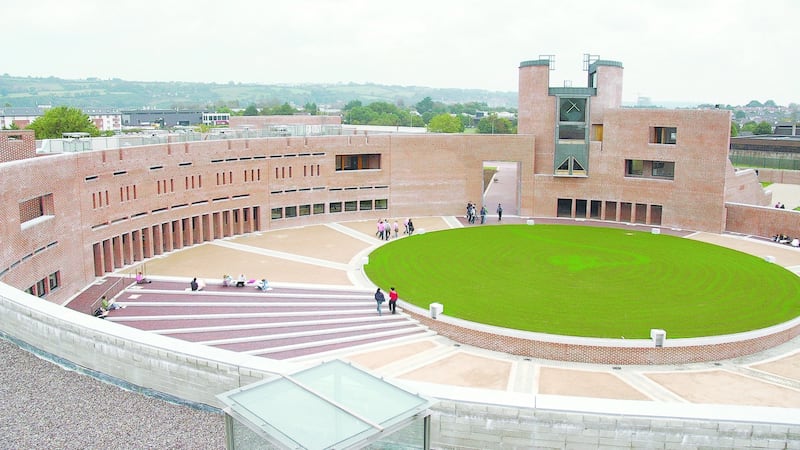
Faced in lime-mortar-jointed brick both inside and out, Cork Institute of Technology’s Student Centre Building (1997-2006) by de Blacam and Meagher, handsomely evokes the spirit of Estonian-born US architect Louis Kahn – with whom de Blacam once worked – especially of Kahn’s Indian Institute of Management Ahmedabad.
In Cork, the work started in 1990, when an original master plan was changed by introducing an arc of buildings made of the same brick. The CIT campus is about 75 acres, the same size as Trinity College in Dublin, and the west facade of the student centre has diagonal stairs, blank brick walls, and a brick pergola overlooking a running track.
Work at IIM Ahmedabad, in the state of Gujarat, began in 1962 and lasted until 1974, the year Kahn died. Just this year (2021) plans to demolish 14 of 18 brick dormitories that form part of the campus were scrapped after protests by heritage activists.
Christ in concrete
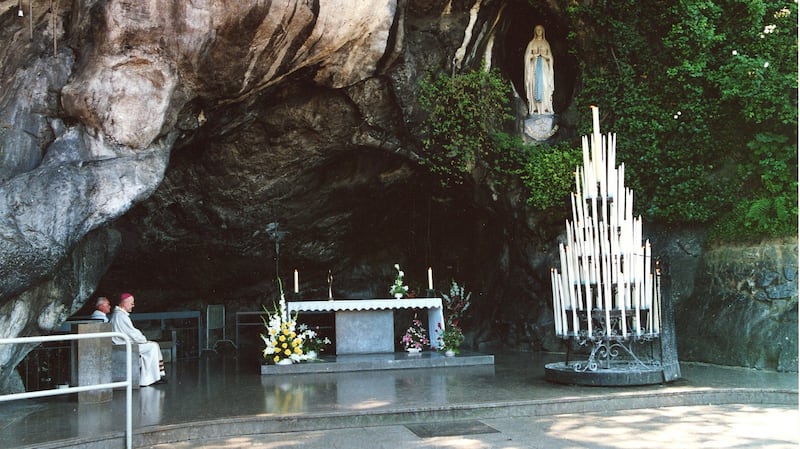
A full-size concrete replica of the Massabielle Grotto in Lourdes, France, was built in 1930 beside Mary Immaculate Catholic Church, Inchicore, and has since become known as “the Irish Lourdes”. Despite its impressive scale – 15m high, 40m wide, and 12m depth – then archbishop of Dublin John Charles McQuaid opposed its construction and the idea of novenas being held there at the same time as in Lourdes.
Little has changed at the grotto, which can be seen from the road, except the removal of the original railings. Oblate Br Patrick McIntyre was an engineer and priest who made several visits to Lourdes concerning specifications for the construction, with reinforced concrete, beginning in 1928 (much of the two-year construction was by workers of the Great Southern Railway Works at Inchicore).
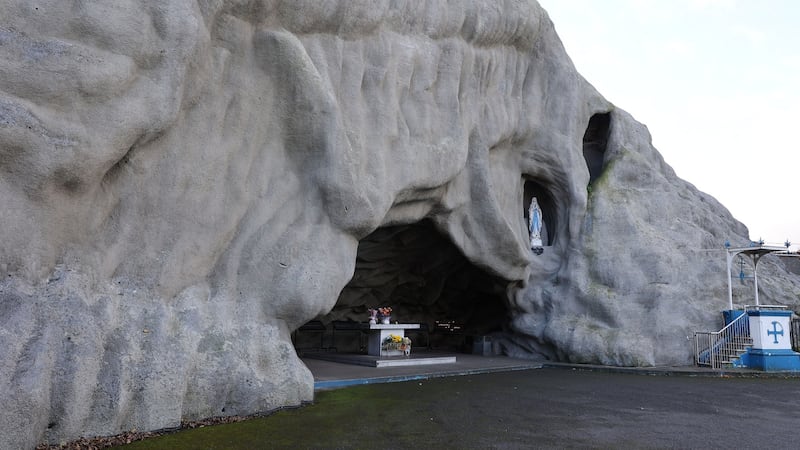
Within the roughcast render is a statue of the Virgin Mary elevated in a niche, accompanied by a limestone altar and timber pulpit. Tens of thousands of worshipers are said to have gathered for the grotto’s opening in 1930.
The Sunshine Houses , Clontarf
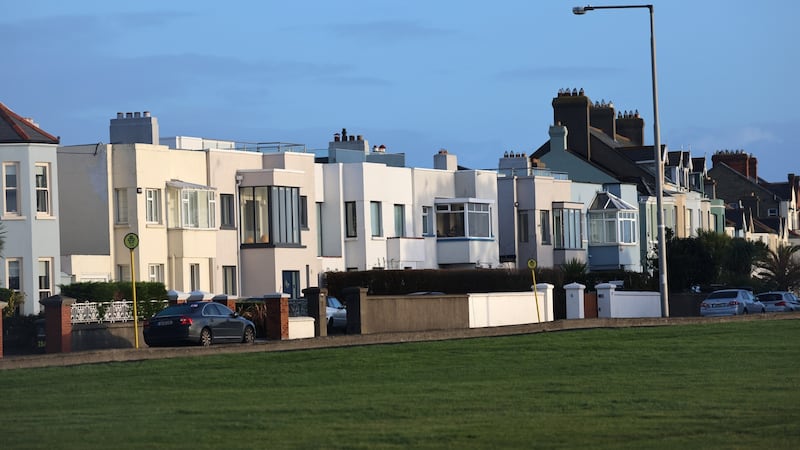
The Sunshine Houses (1932) by Robinson and Keefe, on the Clontarf Road, were an early attempt at the International Style in suburban Dublin. Semi-detached, they were designed with flat roofs and jutting balconies due to their location near Dollymount Strand. A stripped back aesthetic to the houses also shows the influence of the De Stijl School in the Netherlands, and similarities to Villa Henny in Utrecht, built in 1915.
Villa Henny was inspired by Frank Lloyd Wright's Prairie Houses, and according to iconichouses.orgwas on the market most recently for €2 million. Henny stood out from the beginning with its geometrical design, grey plinths, white-plastered concrete, and cantilevered roof, and was a forerunner to the Unesco-listed Rietveld Schröder House (1924), also in Utrecht.
Dublin Airport
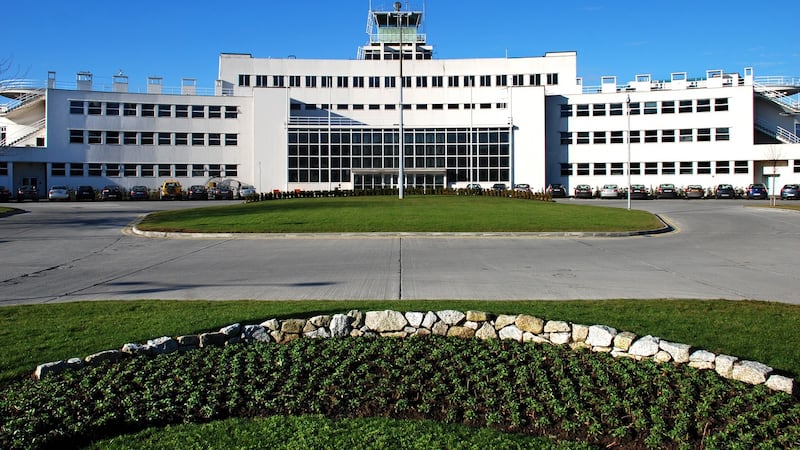
Budaörs Airport, Budapest by Virgil Borbiro opened in 1937, a year before work began on Dublin Airport’s original passenger terminal, which was one of the first buildings in Ireland designed in the International Style.
Borbiro came from an engineering background, and made his designs for the airport in Hungary by 1931, but the Great Depression put paid to any development.
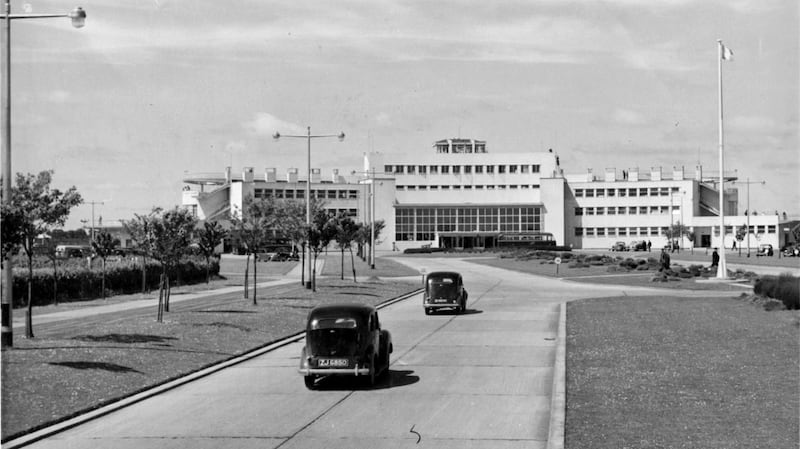
While Dublin’s terminal is not circular like Budaörs – Gatwick’s first airport terminal is a more direct comparison – there is an undoubted influence on Desmond FitzGerald’s work, which opened in 1940, with its curved shape and repeated bands of horizontal glazing.
Air travel outgrew Borbiro’s and FitzGerald’s buildings; the former is now used for leisure flying, while the latter is home to the Dublin Airport Authority.





















